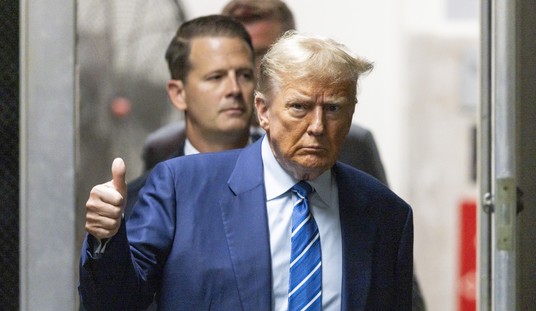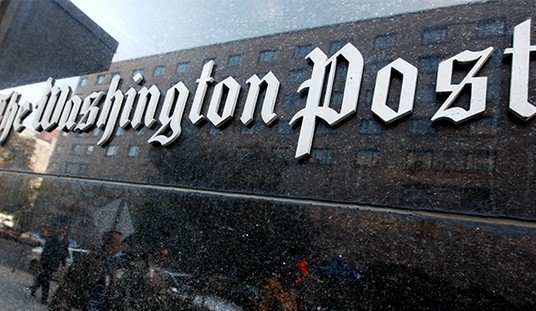WASHINGTON – President Obama is laying the groundwork for an end-run around Congress if lawmakers refuse to address the issue of global climate change.
Obama unexpectedly used a significant portion of Tuesday’s State of the Union address to urge a reluctant Congress to “pursue a bipartisan, market-based solution to climate change,” a reference analysts took to mean implementation of cap-and-trade – a system that passed the House in 2009 but subsequently was ignored in the Senate.
“But if Congress won’t act soon to protect future generations, I will,” Obama said. “I will direct my cabinet to come up with executive actions we can take, now and in the future, to reduce pollution, prepare our communities for the consequences of climate change and speed the transition to more sustainable sources of energy.”
The Republican-controlled House has exhibited no interest in revisiting a cap-and-trade system that critics maintain could cause consumer energy costs to skyrocket by as much as 65 percent.
“If the president wants to impose a cap-and-trade national energy tax, I encourage Senate Democrats to take it up,” House Speaker John Boehner (R-Ohio) said Thursday, adding, “This isn’t the agenda that Americans are looking for — and many in the president’s own party won’t support it.”
On the surface there’s little the White House can do without congressional approval. But the president expressed determination to move ahead.
“For the sake of our children and our future, we must do more to combat climate change,” Obama said. “Yes, it’s true that no single event makes a trend. But the fact is, the 12 hottest years on record have all come in the last 15. Heat waves, droughts, wildfires, and floods – all are now more frequent and intense. We can choose to believe that Superstorm Sandy, and the most severe drought in decades, and the worst wildfires some states have ever seen were all just a freak coincidence. Or we can choose to believe in the overwhelming judgment of science – and act before it’s too late.”
The best option Obama appears to hold for achieving his climate change goals could be the one Republicans loathe the most — the Environmental Protection Agency.
The U.S. Supreme Court ruled in 2007 that the EPA has the authority to regulate carbon dioxide emissions under the Clean Air Act but only if the agency rendered a legal determination, referred to as an endangerment finding, maintaining that CO2 represents a threat to human health and the environment.
Former EPA Director Lisa Jackson did just that on Dec. 7, 2009, including carbon dioxide among six pollutants the agency maintains contribute to climate change – a finding upheld by the federal courts. As a result, the EPA already is moving ahead on strict standards that effectively ban the construction of coal-fired power plants unless they had the capability of capturing carbon dioxide emissions.
Now, unless Congress acts on cap-and-trade, it appears the Obama administration is prepared to move ahead on limiting carbon dioxide emissions at existing coal-fired power plants, which rank as the nation’s top greenhouse gas producers. It’s an initiative that could wind up costing the industry billions of dollars.
“The president has a full box of tools to strike back at climate chaos,” said Frances Beinecke, president of the Natural Resources Defense Council. “The best tool he has is the Clean Air Act. It gives him the authority to reduce the carbon pollution from our dirtiest power plants, the single greatest threat to our climate future. That will take presidential leadership. Americans are counting on it.”
According to the Energy Information Agency, coal is responsible for about 35 percent of the nation’s energy generation, a sum that has declined somewhat as some plants turn to cleaner and more efficient natural gas. Still, about 34 percent of the nation’s greenhouse gas production emanates from coal-fired power plants.
Operators of coal-fired power plants may find themselves preferring cap-and-trade to new Clean Air Act emissions standards. Under cap-and-trade, the federal government determines an appropriate amount of emissions that can be released from each plant and then issues permits – also known as carbon credits — to each plant, setting a cap on the amount of pollutants each plant can emit.
In some instances it’s anticipated that some plants wouldn’t be able to meet the government-established pollution limits. Those power generators would then have to purchase – or trade for — permits from other plants that come in under their caps.
In effect, under cap-and-trade, those plants that exceed their allowances are punished financially while those who successfully reduce their emissions are rewarded through the sale of its permits. But that trading option won’t be available if the EPA simply implements new, stricter pollution regulations.
The EPA has used the regulatory tool on coal-fired plants before. In Dec. 2011 the agency adopted a Mercury and Air Toxics Standards rule that established levels for emissions of mercury, arsenic, chromium, nickel, and acid gases – all of which are considered dangerous to public health. The agency estimated that implementing the rules would cost $9.6 billion. The power industry asserts it’s more likely to ultimately cost in the range of $100 billion — a sum that will have to be passed on to utility customers and force the shutdown of some older coal-fired plants.
The president’s efforts are sure to attract opposition, even from within his own party.
“He (Obama) is absolutely wrong in his misguided efforts to circumvent the Congress with unilateral regulatory actions that will result in job loss, especially when it comes to the EPA’s unfair and inequitable treatment of coal mining in Appalachia, which the Congress and the courts are rightly resisting,” said Rep. Nick Joe Rahall (D-W.Va.). “I intend to keep on doing all that I can to promote coal and keep our miners on the job producing affordable energy for the nation.”
David W. Kreutzer, research fellow in energy economics and climate change at the Heritage Foundation, asserted that the scientific basis for Obama’s initiative is growing weaker.
“There have been four more years of no global warming,” he said. “In 2010, there had been no significant world temperature increase for over a decade. The streak is now 16 years long. We have four years of costly lessons on the waste and inefficiency of green-energy subsidies. It is time for the administration to quit using both arguments to justify a regulatory and fiscal power grab.”
Andrew Steer, president of the World Resources Institute, expressed support for reducing carbon emissions and noted the administration could reach its target of reducing greenhouse gas emissions by 17 percent below 2005 levels by 2020 by “cutting emissions of hydrofluorocarbons, tackling methane from natural gas systems and enhancing energy efficiency.”
“By reaching its emissions target, the U.S. can signal that it’s serious about tackling climate change at home while enhancing its credibility on the global stage,” Steer said. “With more droughts, wildfires, and extreme weather events taking their toll around the globe, the world desperately needs more action. And, it needs the United States to be a leader on climate change.”
Natural gas production is on the rise to a great extent, ironically, because of the regulations imposed on coal. But its extraction, processing, and transmission can release methane – itself a potent greenhouse gas.
Obama, in his State of the Union address, hinted that the federal government intends to “encourage the research and technology that helps natural gas burn even cleaner and protects our air and water.”
A study by the World Resources Institute found that some technologies already exist and “can pay for themselves in fewer than three years.”
Standards set in 2012 already target methane leakage from some steps in the natural gas process. But during fracking, a method used to extract natural gas from underground, methane emerges and is burned off – creating carbon dioxide. The administration may therefore consider additional regulations identifying methane as a greenhouse gas.
The president also used the speech to address energy efficiency, setting a goal of cutting energy wasted by homes and businesses in half over the next twenty years.
“The states with the best ideas to create jobs and lower energy bills by constructing more efficient buildings will receive federal support to help make it happen,” he said.
The administration already has a Building Technologies Program within the Department of Energy that is looking to develop cost-effective energy saving solutions through “better products, better new homes, better ways to improve older homes, and better buildings in which we work, shop, and lead our everyday lives.”
The U.S. spends more than $400 billion each year to power residences and commercial buildings, contributing to almost 40 percent of the nation’s carbon dioxide emissions, according to the Department of Energy. Much of that energy is wasted – 20 percent or more on average. Reducing energy usage in the nation’s buildings by 20 percent would result in savings of about $80 billion annually.
To achieve that, the administration may consider boosting energy efficiency standards on appliances like refrigerators, air conditioners and washers and dryers.
And there is also the possibility that the administration will look into reducing hydrofluorocarbons, a greenhouse gas used primarily for refrigeration and cooling.








Join the conversation as a VIP Member